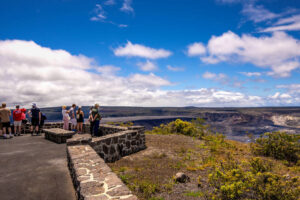Anger and agony in South Korea after plane crash-lands, killing 179
MUAN, South Korea — The passenger plane with 181 people on board skidded on the runway at a high speed and slammed into a wall before exploding into flames.
Two crew members were rescued alive from the tail of the burning plane, but over the ensuing hours on Sunday, grim news trickled out to anxious relatives at Muan International Airport, in southwestern South Korea.
ADVERTISING
By late Sunday, all of the remaining 179 people on board had been confirmed dead, making the crash of the plane — flown by the popular low-cost carrier Jeju Air — the worst aviation disaster involving a South Korean airline in nearly three decades and the worst ever on South Korean soil.
Sunday’s crash was the deadliest worldwide since that of Lion Air Flight 610 in 2018, when all 189 people on board died as the plane plunged into the Java Sea, according to reports from the International Civil Aviation Organization, a United Nations agency.
Officials were investigating what caused the Jeju Air flight to crash-land, including why its landing gear appeared to have malfunctioned and whether the plane had been struck by birds.
As speculation swirled about the cause of the crash, hundreds of family members of passengers endured the painful wait for news of their loved ones returning home from a trip abroad. Wails and screams filled the Muan airport on Sunday afternoon. A young woman comforted an older woman weeping about her son. Two crying women embraced each other.
By Sunday evening, only 65 of the dead could be identified through their fingerprints and other means, officials said. A dozen bodies were so badly damaged that officials could not immediately identify their gender. Those who were identified included a 23-year-old flight attendant and a 78-year-old male passenger.
Jang Gu-ho, 68, sat stoically in the arrivals hall next to his teary-eyed wife after rushing from his home in the nearby city of Mokpo. He said five of his relatives had been on the plane returning from a vacation: his wife’s sister, her daughter, son-in-law and two grandchildren.
“We’re thunderstruck,” he said.
In a closed area of the airport, officials were working to identify the bodies they recovered from the crash site. When officials posted on the walls of the arrivals hall the names of those confirmed dead, people rushed to check the lists.
The disaster left South Korea in shock at a time when the country was grappling with a political crisis unleashed by President Yoon Suk Yeol’s ill-fated and short-lived declaration of martial law and his subsequent impeachment this month. Deputy Prime Minister Choi Sang-mok, an unelected official, rushed to the scene to deal with his biggest challenge since he took office as acting president on Friday.
The plane crash was especially shocking for the country because it has had no major aviation disaster after a spate of deadly air accidents in the 1990s and earlier. In the last major aviation accident involving a South Korean airline, a Korean Air jet slammed into a hill in Guam, a U.S. territory in the western Pacific, in 1997, killing 229 of the 254 people on board.
It also appeared to have been the first fatal one for Jeju Air, which was established in 2005 and flies to dozens of countries in Asia. Kim E-bae, the chief executive of Jeju Air, bowed as he publicly apologized for the crash. He said that the exact cause of the crash was unclear.
The plane, Jeju Air Flight 7C2216, a Boeing 737-800 jet, had taken off from Bangkok with 175 passengers and six crew members. All passengers were South Koreans, except for two Thai nationals. The jet was landing at Muan, in southwestern South Korea, when it ran into trouble.
Footage of the accident showed a white-and-orange plane speeding down a runway on its belly until it rammed into a barrier at the end of the runway, exploding into a fireball. Local news media cited witnesses describing the sound of the explosion and published photographs of large plumes of black smoke over the site.
The plane had broken into so many pieces that only its tail was immediately identifiable, said Lee Jeong-hyeon, an official in charge of search and rescue operations at the scene. The two crew members who survived were rescued from the tail section.
“We could not recognize the rest of the fuselage,” Lee said.
As the death toll climbed, details of what happened in the final moments before the crash began to emerge.
As the plane was preparing to land, the airport warned the pilots about a potential bird strike, said Ju Jong-wan, a director of aviation policy at the Ministry of Land, Infrastructure and Transport. Around this time, witnesses heard loud explosion-like sounds, MBC-TV reported. The channel broadcast footage showing flames trailing briefly from one of the plane’s engines.
The plane issued a mayday alert shortly after the warning from the airport, then crash-landed, Ju said. The pilot aborted his first attempt at landing and with permission from the control tower, was landing from the opposite direction when the disaster happened, officials said. Planes were allowed to land from both directions at the airport, they said.
The muddy tidal flats near Muan and much of the west coast of the Korean Peninsula are favorite resting places for migrant birds.
Photographs in local media showed flocks of birds flying near the airport on Sunday.
Evidence suggested that the aircraft encountered a flock of birds during its approach, leading to suspected bird ingestion by the engines, said Marco Chan, a senior lecturer in aviation operations at Buckinghamshire New University in England.
© 2024 The New York Times Company





